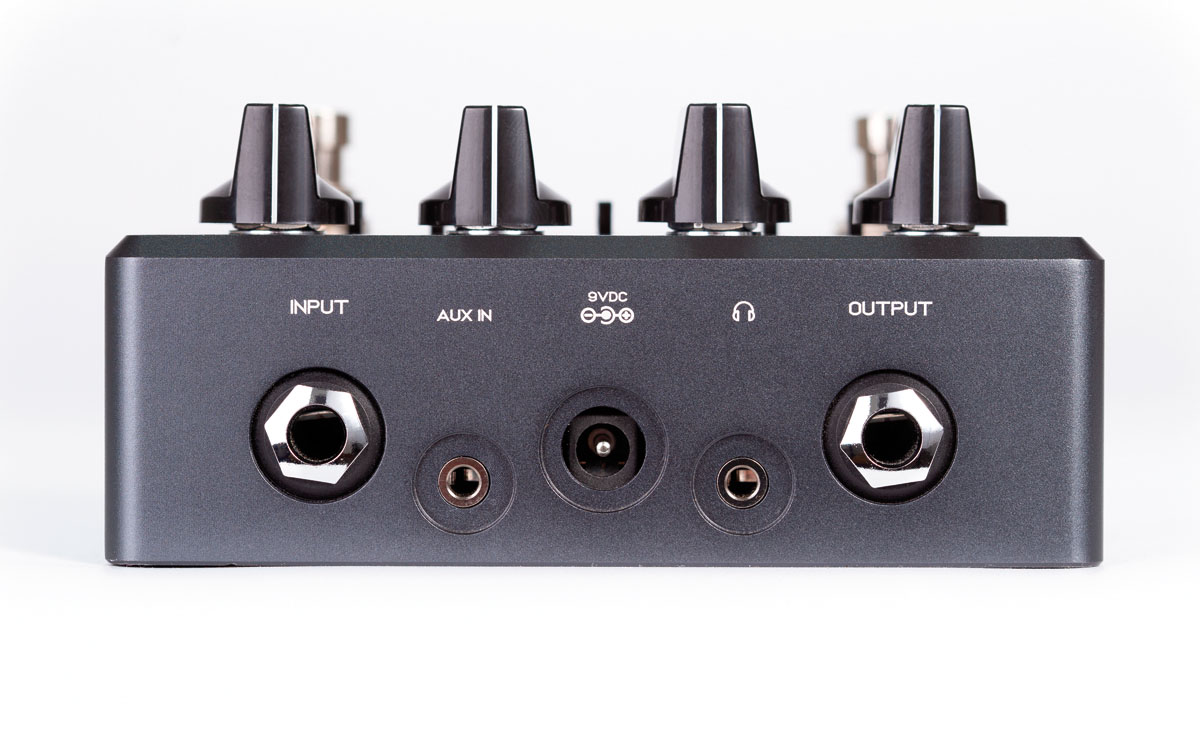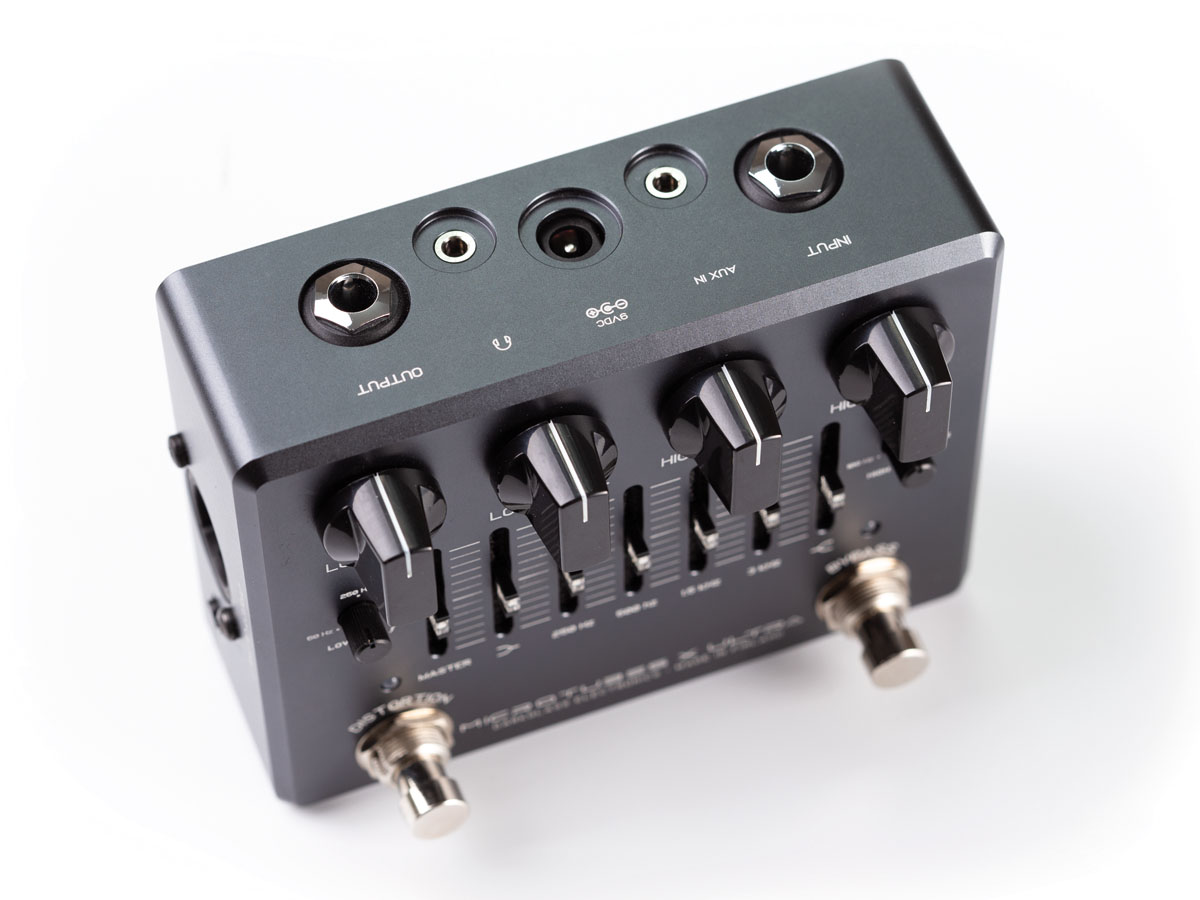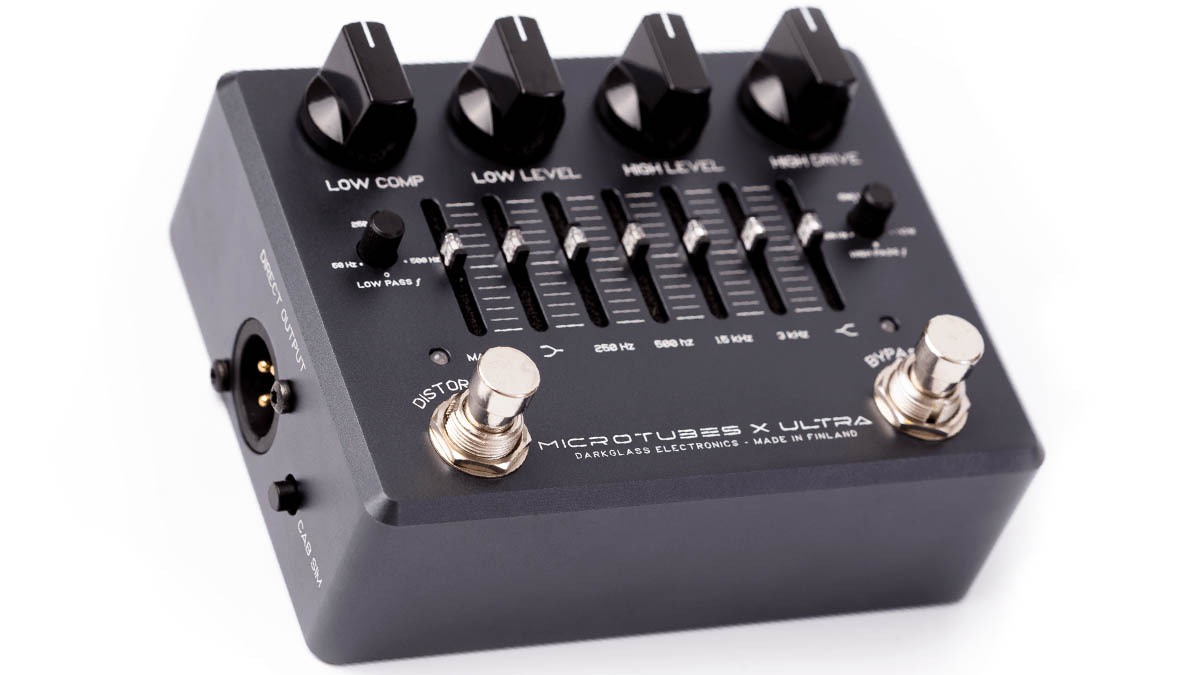Guitar World Verdict
Another high-quality winner from Darkglass, the Microtubes X Ultra offers formidable tone-sculpting capability and a distortion to take the paint off the wall.
Pros
- +
Lots of functional versatility with a wide tone range.
- +
Quality components and build.
- +
Excellent silent practice tool.
- +
Cab sims are superb.
Cons
- -
Some players may find it too complicated.
- -
It’s pricey.
You can trust Guitar World
There’s no disputing that Darkglass has given the rock and metal community what it wants. Their latest product is a DI box, a silent practice pedal, a distortion and an EQ unit all in one.
It’s feature-packed, with Aux-In and headphone sockets, XLR and jack inputs and outputs, a cabinet simulator to warm the XLR output up a little, and a novel Micro USB B socket for connection to a PC/Mac.
This allows the user to make use of the Darkglass Suite software, which enables you to configure the pedal, load virtual cabinet profiles and download firmware updates. The front end is extremely user-friendly, with all the controls laid out intuitively.
There are controls for compression and drive, low and high levels, low and high pass filters, master, low and high shelving frequencies and a four-band EQ.
The level of tonal manipulation available is superb, giving the player optimum control
The bottom end of your signal is compressed to maintain the bass frequencies, while the top end is distorted, as and when you choose to call upon the CMOS distortion circuitry. The EQ, master and shelving controls are lit with red LEDs when called upon: these can be bypassed using the Bypass stomp switch, as can the distortion.

The tones on offer are solid and raucous, as we’ve come to expect from various Darkglass products. When it comes to modern distortion tones, the firm are among the leading exponents, and we’re pleased to report that the X Ultra is everything you could want from that area.
The level of tonal manipulation available is superb, giving the player optimum control: should you find some of the overtones or resonances a little too much, winding the problematic frequencies in is relatively easy.
Your bass frequencies are maintained at all times, and if you need to clean that side of things up to project through a heavy band mix, you have options at your disposal. These are particularly beneficial if you play in dropped tunings where low string tension might cause resonance and harmonic issues.
The unit is particularly useful if you need to practice silently, with additional PC/Mac/Aux-In connections and a 3.5mm headphone output. Using the Cab Sim option warms up the bass signal impressively, so if recording or private practice on the fly is required, this unit is a workable alternative to a cabinet.
At £395, it isn’t cheap, but it’s versatile and will no doubt solve many requirements for a large swathe of the bass community. Definitely worth auditioning.

Specs
- Price: $429 / £395
- Made In: Finland
- Features: Low Comp, Low Level, High Level, High Drive, Low Pass (50Hz, 250Hz, 500 Hz), High Pass (100Hz, 500Hz, 1kHz), Master (+/-12dB), Low Shelf (+/-12dB @ 80Hz), 250Hz/500Hz/1.5kHz/3kHz (+/-12dB), High Shelf (+/-12dB @ 5kHz), Distortion selector stomp button, Bypass, stomp button, 1/4” jack Input socket, 1/4” jack Output socket, Balanced XLR DI, output, Ground Lift selector, Cab Sim, selector, 3.5mm Aux-In input, 3.5mm, Headphone output, Micro USB B socket
- Dimensions: 125mm x 96mm x 57mm / 4.9” x 3.8” x 2.2”
- Power: 9 volt DC power supply
- Weight: 430g / 15oz
- Contact: Darkglass Electronics











